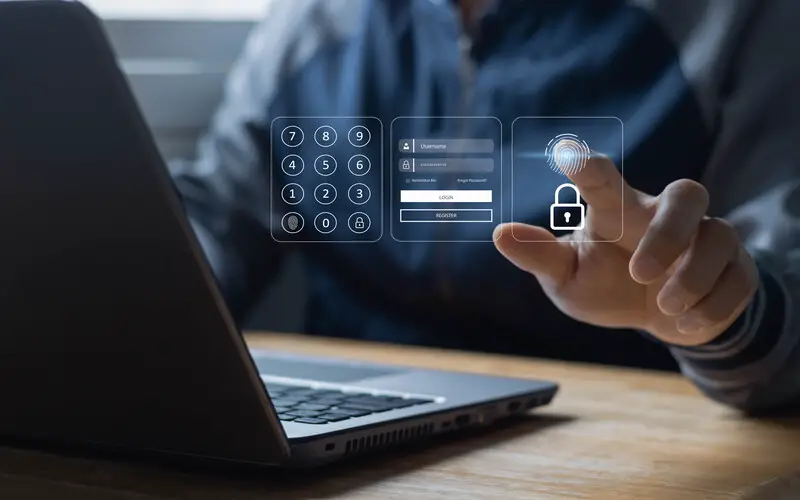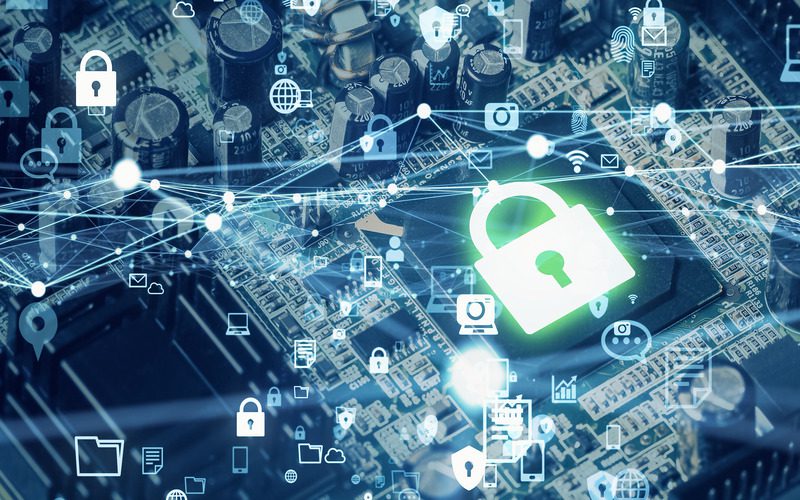Each new endpoint added to a corporate network expands its security perimeter, and since endpoints serve as gateways to a company’s network, they must be protected adequately.
Remote work culture has greatly expanded the security perimeter of companies, making them more vulnerable to external threats. According to Global Workplace Analytics, 69% of U.S. employees worked remotely at the peak of the pandemic. In remote and hybrid work environments, where employees can access a company’s network through unsecured channels, the need for endpoint security has become even more pressing.
In this blog, we’ll discuss topics such as the significance of endpoint security, endpoint security controls and technologies, what sets endpoint security apart from network security and more. Let’s get started.
What is endpoint security?
An endpoint is any device that communicates and shares information with other devices and end users over a network. Endpoints include laptops, desktops, tablets, mobile devices, servers, medical devices and IoT devices. You can think of endpoints as nodes that connect with each other to form a company’s security perimeter.
Organizational security has become one of the biggest concerns in the business world today due to increasingly sophisticated and systematic cyberattacks. In light of these developments, endpoint security has become a top priority for companies.
What is an endpoint in cybersecurity?
The proliferation of smartphones and a growing number of IoT devices being used at work has increased not only the number of endpoints connecting to a company’s network, but also the type of endpoints. Statista reports that the number of mobile devices operating worldwide reached roughly 15 billion in 2021, up by 1 billion since the previous year. At 7.9 billion people worldwide, that amounts to about two mobile devices per person. Listed below are some of the most common endpoints you’ll find in any organization and how they can serve as an attack surface for a cyberattack.
Laptop: A breach, theft or loss of a company’s laptop can give unauthorized people access to company data and information. Threat actors can get their hands on company login credentials and launch a cyberattack easily while confidential information found on the laptop can be sold on the dark web for a high sum.
Mobile devices: Most people use their personal tablets and smartphones to check work email and handle simple office tasks, even when they haven’t registered their devices with the company’s IT department. Considering these devices are not secured in accordance with company policy and protocol, and that employees use them to browse the internet freely, using them for office work poses serious threats to company security.
Internet of Things (IoT) devices: IDC predicts that there will be 55.7 billion connected devices worldwide by 2025, 75% of which will be connected to an IoT platform. IoT devices are sort of mini-computers that use sensors to collect data and use machine learning to improve their functionality and performance. Because these devices connect to the internet, they are vulnerable to malware and hacking.
Switches: Switches connect multiple devices so that they can communicate and share information with each other. They do this by receiving network packages and sending them to the devices for which they are intended. Since switches serve as information highways, hacking one can lead to loss or theft of data and communication disruption between devices, which could cripple the work process.
Printers: Even printers can be exploited to launch a cyberattack. Since printers store and transmit data as part of the printing process, they become crucial data hubs. Unless you patch your printer on time and protect web access to it using the right security software, you could leave your home or office network vulnerable to data thievery and more.
Servers: Servers are necessary for almost everything including checking emails and connecting to the internet. When a server is compromised, a business can incur considerable losses. Even something as simple as a weak password or lack of an antimalware solution can compromise server access and lead to loss of critical business data and functions.
What is the difference between endpoint security and network security?
A complete cybersecurity defense requires that network and endpoint security work together since one without the other could prove insufficient against well-designed cyberattacks. The two can be considered subsets of each other.
Network security involves using tools and technologies to protect data, devices, files and information stored or shared over a network. The purpose of network security is to protect the integrity, confidentiality and availability of information, and to ensure that only authorized people have access to a certain network. By being proactive, network security detects, blocks and neutralizes threats on an ongoing basis, preventing them from reaching an endpoint.
Endpoint protection, on the other hand, entails the use of advanced security tools and processes to secure various endpoints like servers, workstations and mobile devices that connect to a corporate network.
What does endpoint security do?
When data is the new oil and competition is fierce, cyberattacks can result in businesses paying millions of dollars in ransom, or even experiencing a complete shutdown of their operations. Chicago-based CNA Financial Corp, one of the largest insurance companies in the United States, allegedly paid $40 million in March 2021 to regain control of its network following a ransomware attack. Since cyberattacks almost always have severe consequences, securing endpoints becomes extremely important because they can become gateways into a company’s network, databases, servers, and other parts of the larger IT infrastructure.
In the bigger cybersecurity plan, endpoint security is seen as protecting a company’s front line. By utilizing advanced tools, technologies and processes, companies can prevent both internal and external threats from using their endpoints as an attack surface. Since managing hundreds and thousands of remote and on-site endpoints can be overwhelming, companies use endpoint security tools to manage this laborious process.
Modern day endpoint security solutions are built on traditional antivirus solutions that detect viruses based on their signature. Advanced endpoint security platforms not only help identify viruses but also neutralize them along with a broad range of other threats like ransomware, polymorphic codes and Distributed Denial of Service (DDoS) attacks that can cause severe financial and reputational damages to a company.
Why is endpoint security important?
According to IDC, 70% of breaches begin at an endpoint. Cybercriminals can take advantage of an unsecured endpoint to break into a network and steal confidential information. In addition to theft, threat actors can engage in corporate espionage and cyber extortion as well as a number of other criminal activities that could adversely affect business operations and brand reputation. Organizations can no longer ignore endpoint security, especially since it plays a pivotal role in protecting them from the increasingly dangerous threat landscape. Benefits of endpoint security include:
Securing endpoints: The primary goal of endpoint protection is to keep the data on endpoints safe and secure from theft or manipulation. This includes protecting it from both external threats and from malicious insiders.
Secure remote and diversified workforce: As companies’ security perimeters become more porous thanks to remote and hybrid work and a diversified workforce, they need a greater level of visibility and control over their endpoints. A security solution installed and managed on the endpoint itself allows administrators to keep a closer eye on any suspicious behavior, even remotely, and resolve issues as soon as they arise. Moreover, the practice of bring-your-own-device (BYOD) is becoming more commonplace. By implementing a stringent endpoint security system, IT administrators can take effective measures to secure these devices and prevent them from being exploited.
Advanced threat protection: To counter cyberattacks, one needs to do more than react to an incident. It’s about constantly monitoring for unauthorized activity and unusual device and application behavior that can point to a breach in action. Endpoint protection tools combine the functionality of various security solutions, such as antivirus, antimalware, firewalls, antispyware and intrusion prevention, into a single package to provide comprehensive protection.
Protecting identity: Endpoint security ensures that even if a device or application falls into the wrong hands, it cannot be misused. The use of multifactor authentication (MFA) and biometric identification ensures that only authorized personnel can access the company’s network. Although cybercriminals aim to crack these codes, the multiple layers of security make launching an attack difficult, allowing the company to defend itself.
How does endpoint security work?
Rather than managing their endpoints using separate products, businesses use Endpoint Protection Platforms (EPPs) that combine the functionality of several security products.
To make it easier for companies to manage multiple security components from one place, EPP platforms come equipped with vulnerability and patch management, configuration management, disk and encryption facilities, backup and disaster recovery features to name a few. In addition to monitoring execution processes and log files on various endpoints, EPP tools can analyze variances and redress incidents automatically.
Unlike traditional antivirus and antimalware tools, endpoint protection tools today combine features of both AV and AM tools as well as the capabilities of cloud computing and remote monitoring to offer comprehensive network and endpoint security. Detection of more advanced threats, such as polymorphic attacks, file-less malware and zero-day attacks, is also possible with some solutions that offer Endpoint Detection and Response (EDR) capabilities.
What are endpoint security controls?
Endpoint security controls are features and functionalities that define which information, files and devices are allowed to communicate with an endpoint and to what extent. Listed below are some common endpoint security controls.
Device control: This feature controls how an external device connects and communicates with an endpoint, for example a USB drive and storage drive, so that malware coming from external devices does not harm the endpoint.
Network control: A reliable firewall is an example of network control. It examines and filters all incoming traffic for different types of malware.
Application control: This control allows only safe listed or harmless files to be downloaded or deployed on an endpoint. All blocked or harmful files are denied access to the endpoint and cannot be downloaded. The feature is ideal for securing single-purpose devices like Point-of-Sale (PoS) devices and Programmable Logic Controlled (PLC) devices that have limited capabilities.
Data control: Using technologies such as encryption, this function prevents data leaks and helps maintain the integrity of data.
Browser control: A website can host malware, including malicious JavaScript and phishing pages to steal login credentials. Browser controls allow you to set a web filter so that you can control which websites employees can access when connected to the corporate network.
User control: A user control system ensures that only authorized personnel can deploy, run or manage programs or software. As a result, endpoints can be protected from potentially harmful programs and software.
What are endpoint security technologies?
Endpoint security technologies consist of tools and solutions that can detect, respond and neutralize threats. Modern and more sophisticated endpoint protection products offer a combination of these technologies, so clients do not have to buy and manage several products. Common endpoint security technologies are:
Antivirus & Antimalware (AV/AM): Antiviruses are programs that detect and eliminate viruses on a computer system or other endpoints. An antimalware program works against all types of malware, including viruses, worms, trojans, etc.
Data Loss Prevention (DLP): DLP is the process of detecting and preventing data leaks, unauthorized destruction of sensitive information and illicit transfer of data outside the organization.
Endpoint Protection Platforms (EPP): EPP solutions not only prevent malware, worms, Trojans and other intrusive software from making their way into endpoints, but also help maintain a high level of endpoint health and functionality. They provide investigation and remediation capabilities along with protection against malicious activity and file-based malware attacks to ensure a secure and robust business environment.
Endpoint Detection and Response (EDR): By using EDR tools, organizations can identify and respond to cyberthreats before they happen or even while they are in progress. In addition, it is effective at identifying malware with polymorphic codes that go undetected by traditional security tools. Monitoring endpoints continuously allows EDRs to collect and create high-quality databases, which are then analyzed so that the root cause of a problem can be identified, and new malware detected. EDRs also come equipped with machine learning and built-in analytics features that can detect and neutralize threats at a very early stage.
Managed Detection and Response (MDR): Companies can add an extra layer of security by signing up for MDR, which is an outsourced cybersecurity service. In this system, cybersecurity experts use advanced analytics and threat intelligence to identify and respond to cyberthreats that slip past a company’s security controls. The MDR approach provides a more comprehensive and robust cybersecurity solution. It can be useful when internal resources are insufficient or overburdened.
Intrusion Detection and Prevention System (IDPS): An IDPS allows organizations to detect potential cyberattacks early and respond to them automatically.
What is unified endpoint security?
Security tools work better together when they are unified. A unified endpoint security tool combines the features of EPP, EDR, antivirus/antimalware and other threat defenses into a single, centralized administration console. In other words, it’s a modern endpoint security tool that lets IT technicians manage hundreds of endpoints from a single interface.
By managing endpoints in this way, IT experts not only get a bird’s eye view of their endpoint network but can make better security decisions. With a greater understanding of the endpoints and network map, security weaknesses can be identified quickly and addressed in less time.
Secure your endpoints with Kaseya
Kaseya VSA is a unified remote monitoring and management (uRMM) platform that enables IT teams to manage core security functions from a single interface. VSA comes with features, including:
• Automated software patch management
• Deployment and management of AV/AM and EDR solutions
• Integrated backup and disaster recovery (BDR) management
But that’s not all. By leveraging Kaseya Unified Backup integration in VSA, you can reduce downtime with instant recovery, ransomware detection and automated disaster recovery testing. In addition to these integrated security functions, Kaseya VSA includes built-in product security features like two-factor authentication, data encryption and 1-click access to safeguard your IT environment. When you use Kaseya’s suite of security solutions in conjunction with VSA, you can resolve vulnerabilities before they can be exploited by cybercriminals.





